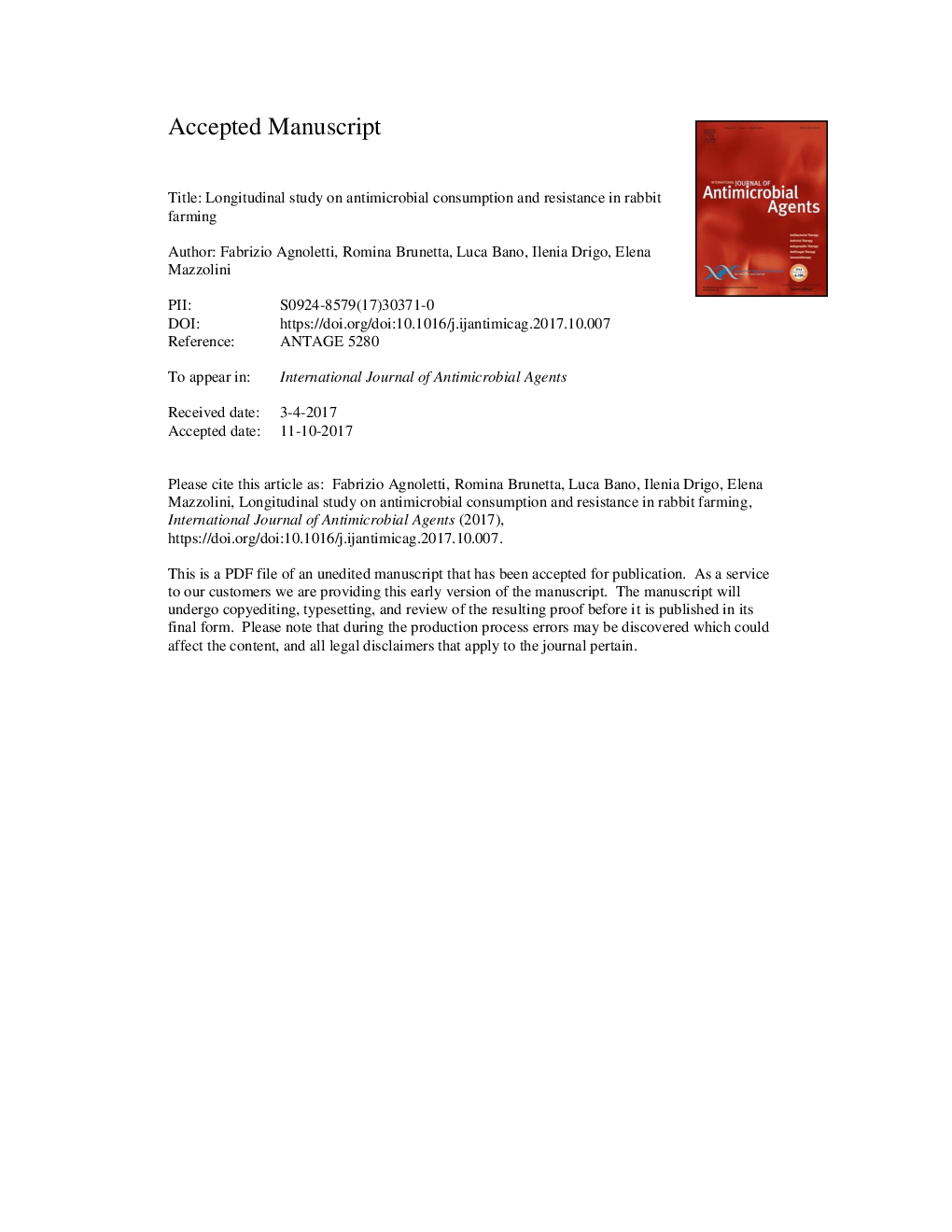| Article ID | Journal | Published Year | Pages | File Type |
|---|---|---|---|---|
| 8738661 | International Journal of Antimicrobial Agents | 2018 | 27 Pages |
Abstract
Reliable indicators of antimicrobial consumption (AMC) measured with harmonised data and supported by indicators for antimicrobial resistance (AMR) at herd level are necessary to target antimicrobial misuse in food-producing animals. AMC data in 2010-2015 in 32 Italian industrial rabbit holdings weighted with semester production and standardised with animal daily doses (ADDs) were collected. Herd-level AMR against eight antimicrobials was assessed in Escherichia coli, Enterococcus faecalis and Enterococcus hirae collected in 2014-2015. Escherichia coli were assessed for mcr-1 and mcr-2 genes. To produce 1âkg of live rabbit, a mean of 71.8 ADDs was used. Overall AMC reduced over time (Pâ<â0.05) owing to lowering consumption of tetracyclines (Pâ<â0.05) and colistin (Pâ<â0.01), but consumption of quinolones (Pâ<â0.05), bacitracin (Pâ<â0.01) and sulfonamides (Pâ=â0.017) increased. All except one indicator E. coli were wild-type for cefotaxime, whereas 97% displayed reduced susceptibility to tetracyclines, 89% to trimethoprim, 63% to enrofloxacin, 24% to chloramphenicol and 21% to colistin. mcr-1 was detected in 50/320 E. coli isolates from 15/32 holdings; mcr-2 was not detected in 58 isolates with colistin MICââ¥â2âmg/L. All 305 enterococci were wild-type for ampicillin, ciprofloxacin and vancomycin and displayed reduced tetracycline susceptibility. The mean antimicrobial resistance index (ARI) was 0.5 for E. coli and 0.3 for enterococci. ARI was significantly correlated with AMC at herd level for enterococci (Pâ=â0.008) but not E. coli where high ARI levels were found in a few holdings with low AMC.
Related Topics
Life Sciences
Immunology and Microbiology
Applied Microbiology and Biotechnology
Authors
Fabrizio Agnoletti, Romina Brunetta, Luca Bano, Ilenia Drigo, Elena Mazzolini,
